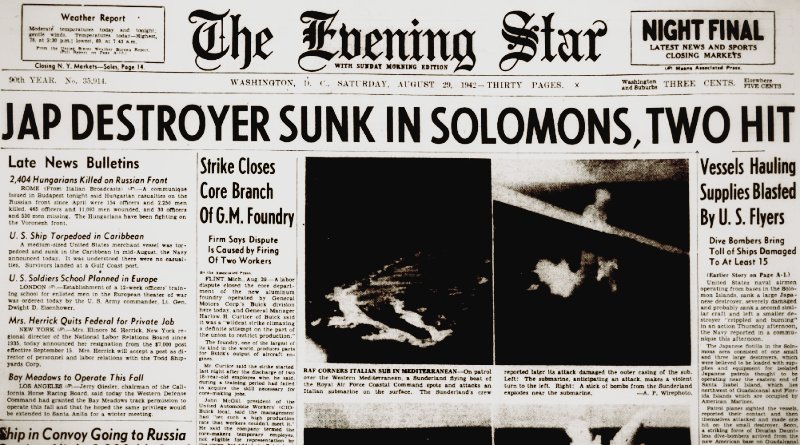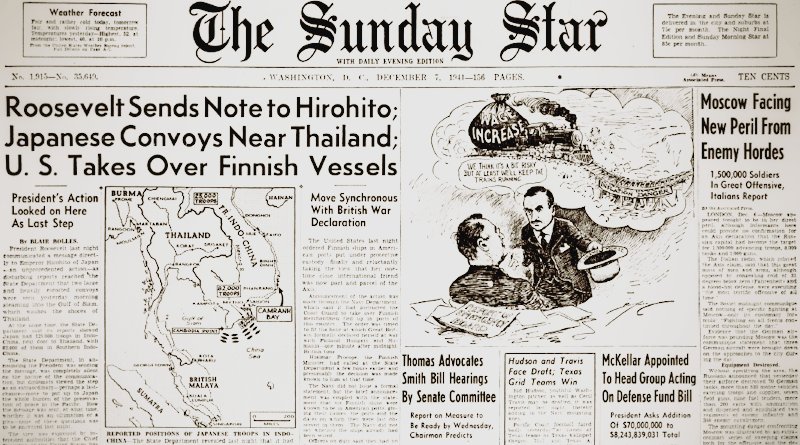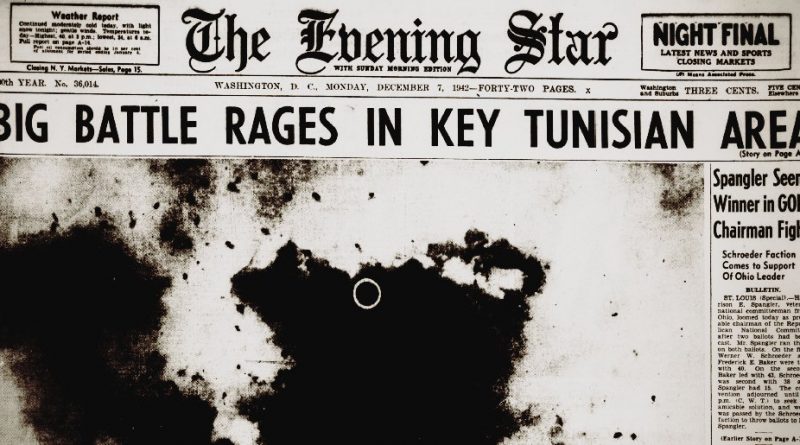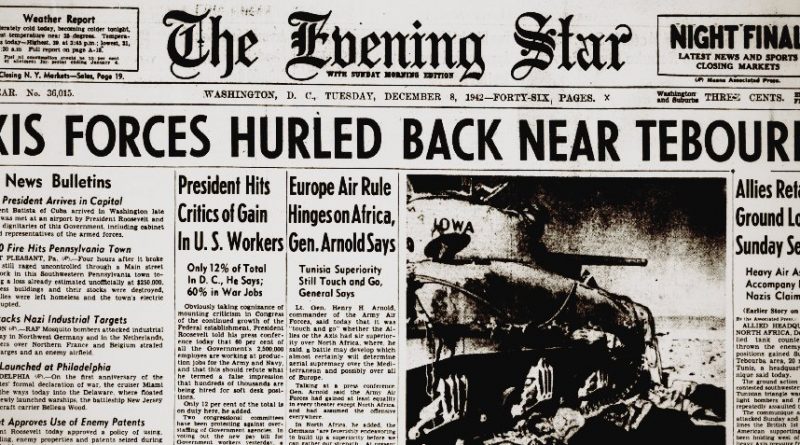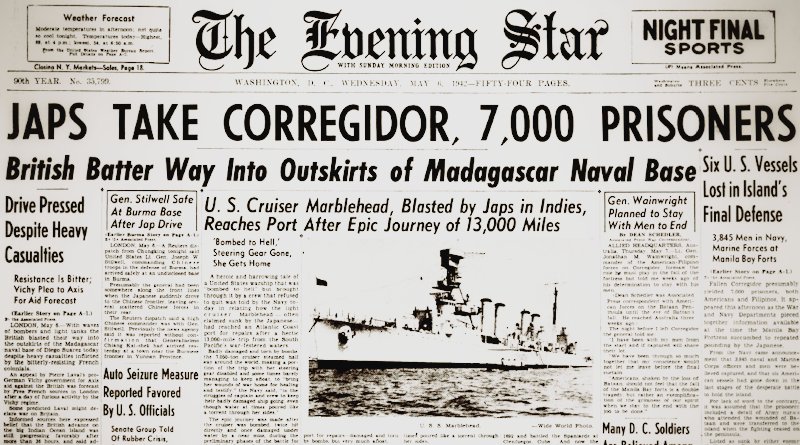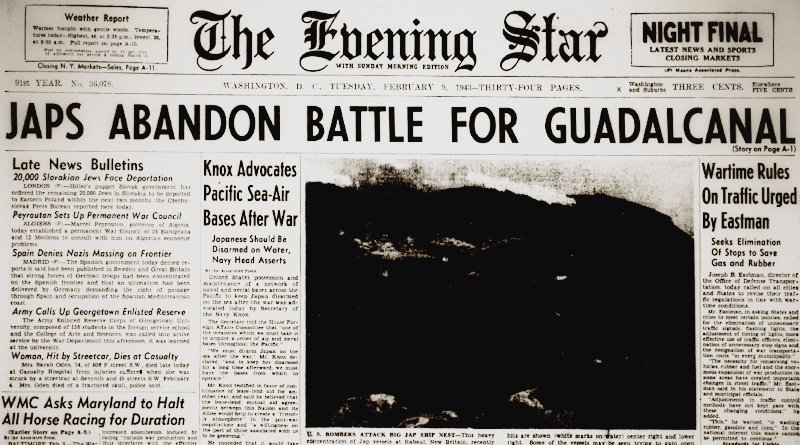World War II Chronicle: August 29, 1942
Click here for TODAY’S NEWSPAPER
Red Army snipers Vladimir Nikolaevich Pchelintsev and Lyudmila Mikhailovna Pavlichenko — “Lady Death” — are part of a Soviet delegation touring Western countries and are currently visiting Washington. While it would be hard to verify their claims, the two soldiers are credited with killing hundreds of German soldiers… George Fielding Eliot column on page 11…
Sports section begins on page 23, which features a Grantland Rice column discussing the upcoming football game between the Army All-Stars and the Washington Redskins. Maj. Wallace Wade, former head coach of the Alabama Crimson Tide and the Duke Blue Devils, leads one of the service’s two all-star teams. The Western Army All-Stars1College Football Hall-of-Famer Lou Little was a captain in the 6th Infantry Division and fought in France during the First World War. He was captain and coach of the Frankford Yellow Jackets from 1920-23, one year before they joined the newly formed National Football League. entire backfield comes from Texas A&M: “Jarrin'” John Kimbrough, All-American, runner up to the 1941 Heisman Trophy, second overall pick of the 1942 NFL Draft; Marion Pugh, who played with the New York Giants last season; Jim Thomason, All-American and fifth overall pick of the 1941 draft; and “Wild Bill” Conatser, a 16th-round selection in 1941.
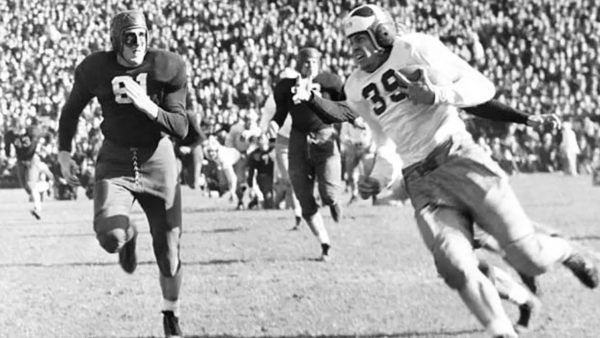
In fact, much of Wade’s starting lineup is from the Aggies’ 1939 national champion team: Bill Dawson at end, Leonard Dickey (tackle), Joe Rout (guard), and Harry Hauser (center) formed the line. Other Western All-Star players: Former Florida end Forest “Fergie” Ferguson was a champion boxer and javelin thrower, and earns a Distinguished Service Cross on Utah Beach; Park Meyers was co-captain at Texas in 1939 and was drafted in the fifth round of the 1940 draft; Emile Fritz played at Vanderbilt. Many of these players return to gridiron after the war and some play professionally. Some are drafted but choose a different career path.
One of Wade’s assistant coaches is former Redskins back Cliff Battles. If we are to believe the sports writer, Washington fans do not miss him. He began his pro career the same year the franchise started, in 1932. Back then, they played in Boston and went by the Braves for one season before switching their name to the Redskins. Battles was an all-pro in five of his six seasons, moving with them to Washington, D.C. in 1937. With rookie quarterback Slingin’ Sammy Baugh and Battles at halfback the Redskins looked unstoppable in 1937 and they defeated the Chicago Bears to become NFL champions. Battles was the league’s top rusher in 1937 and had been making $3,000 a year since he turned pro. Owner George Preston Marshall would not give his running back the $1,000 raise he wanted, but Columbia University did, and at 28 years-old he hung up the cleats and became an assistant coach for Lou Little.1
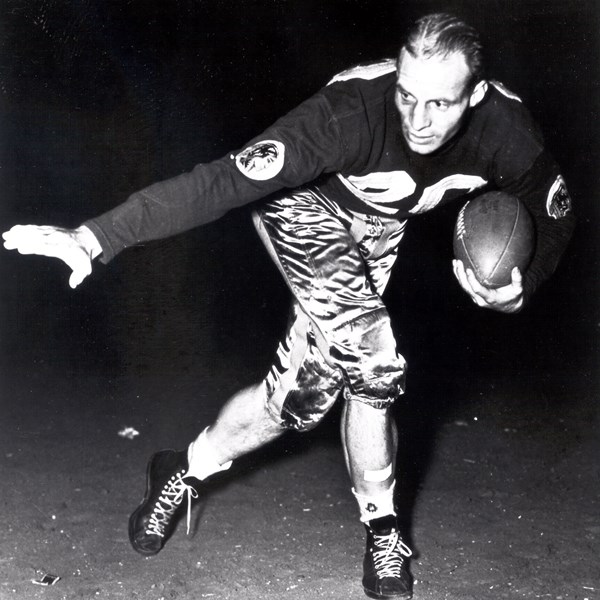
Also on page 23, Amos Alonzo Stagg, the “Grand Old Man of Football” is pictured presenting a trophy to former University of Minnesota halfback George Franck, voted most valuable player of the 1941 college all-star team. Paired with Bruce Smith, Minnesota’s 1940 national championship team had one of the best backfields in football history. Franck was able to play one season with the New York Giants before the war started. He serves as a Marine aviator, and while spotting over Iwo Jima, he sees Marine officer and NFL veteran Jack Chevigny just before the man who scored the winning touchdown in the iconic “Win one for the Gipper” game is killed.
Stagg currently coaches football at the University of the Pacific. He attended Yale University, playing baseball and football. Several baseball teams offered him contracts to turn pro, but he declined. He did, however, invent the batting cage. He was named to the first-ever All-America football team while at Yale. He moved on to become a football coach and instructor at the International YMCA Training School (now Springfield College). One of his coworkers was James Naismith, who invented the sport of basketball in 1891, and Stagg scored the only basket for the losing team in the first public basketball game. He coached the U.S. track and field team in the 1924 Olympics and spent 40 years leading the University of Chicago’s football team. Stagg came up with the idea of uniform numbers, varsity letters, padded goalposts, the linebacker, end-arounds, tackling dummies, the “Statue of Liberty” play, the onside kick, the huddle, and lots more. The first man-made nuclear reaction will happen under the University of Chicago’s Stagg Field in less than three months (Dec. 2, 1942). He is enshrined in the basketball and college football halls of fame…
Over 100,000 fans watched as the defending champion Chicago Bears shut out the College All-Stars 21-0 at Soldier Field. All-American Oklahoma Sooners back “Indian” Jack Jacobs2Jacobs was part of the Creek Nation and didn’t speak English until he was nine-years-old. signed a contract with the Cleveland Rams at last night’s contest between the College All-Stars and the Chicago Bears. He plays one season before serving with the Army Air Force. While at Santa Clarita, Calif., he played on the undefeated Seventh Army Air Force baseball team with Joe DiMaggio. Jacobs returns to the NFL in 1945 and plays for five seasons before beginning a hall of fame career in Canadian football…
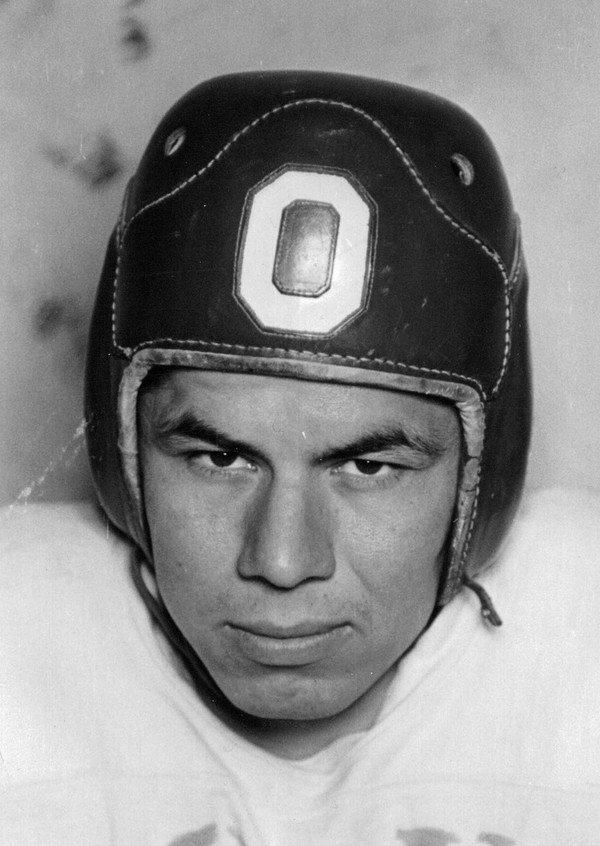
With all these current and former college standouts playing ball, page 24 answers the question you may have been pondering: where is former Michigan superstar Tom Harmon? He is currently training at Williams Field (Maricopa County, Ariz.), learning how to bomb targets.
Evening star. (Washington, D.C.), 29 August 1942. Chronicling America: Historic American Newspapers. Lib. of Congress.
https://chroniclingamerica.loc.gov/lccn/sn83045462/1942-08-29/ed-1/
